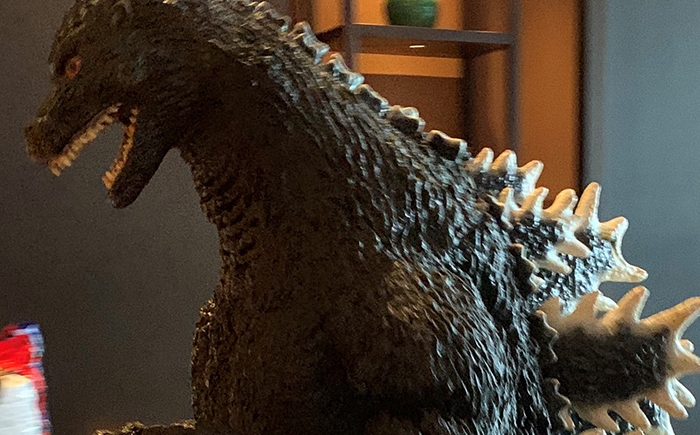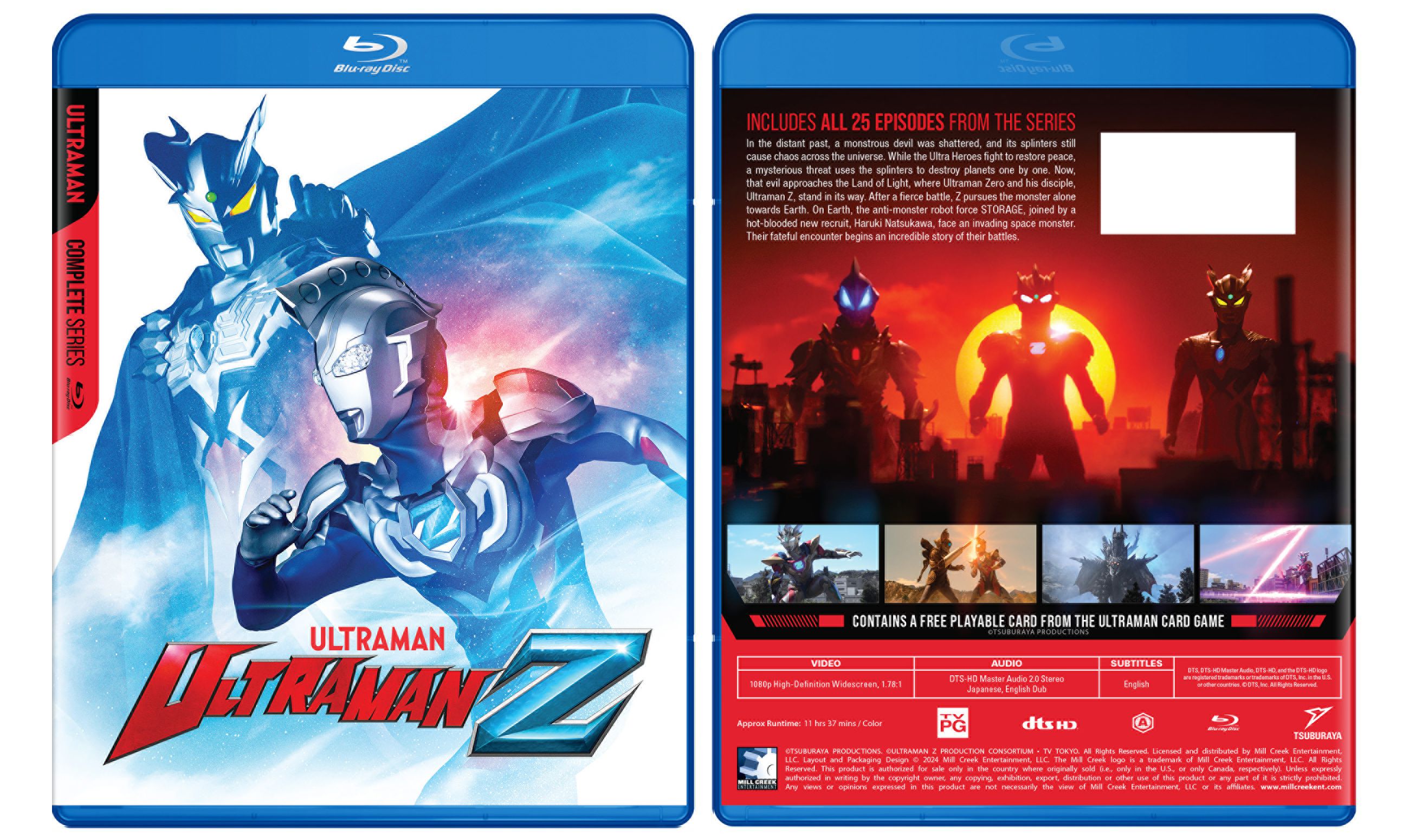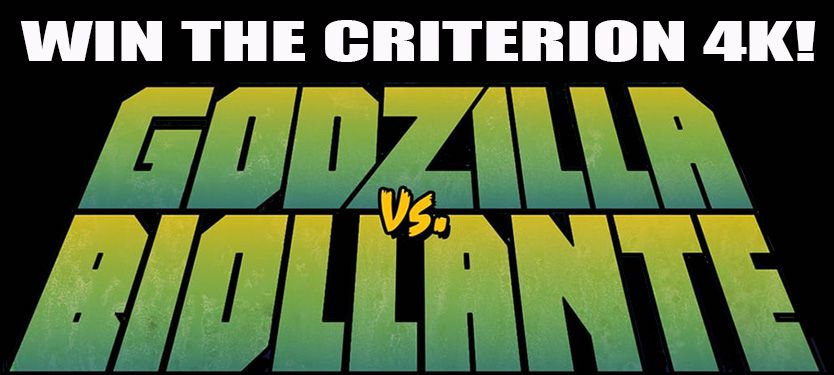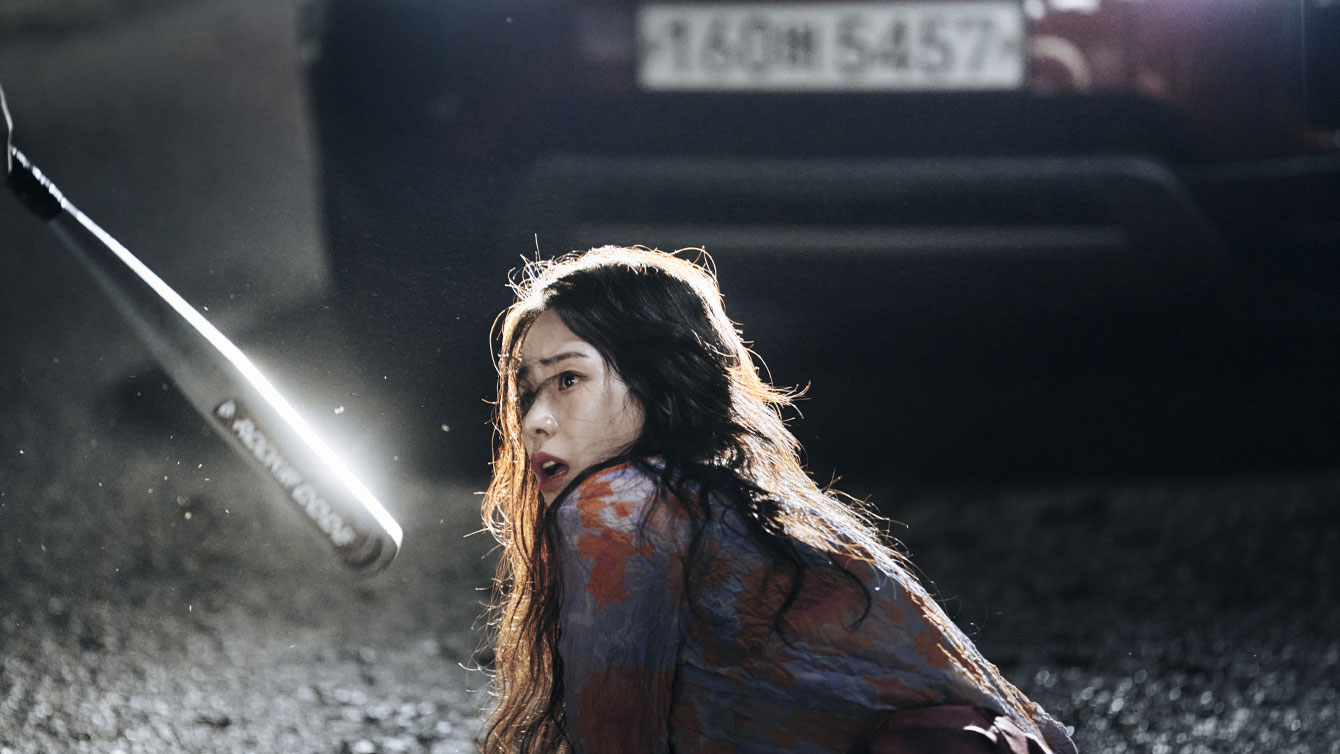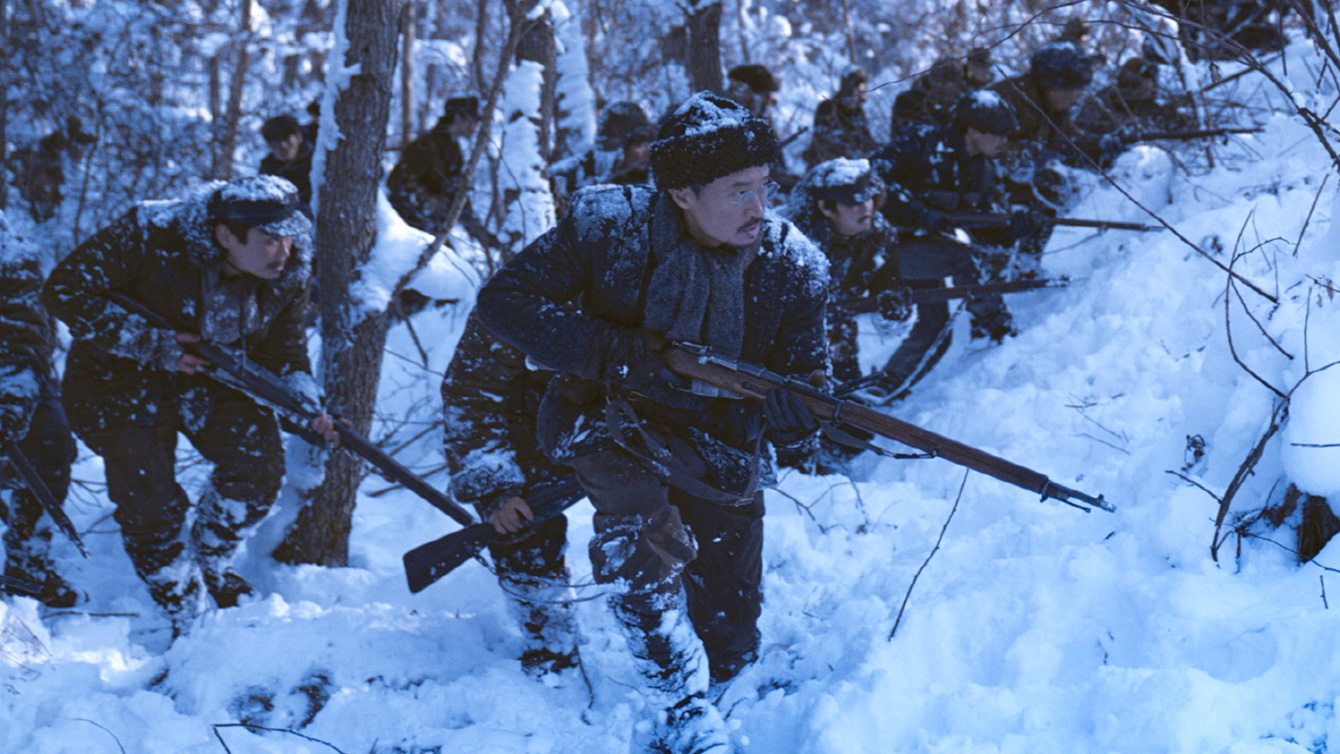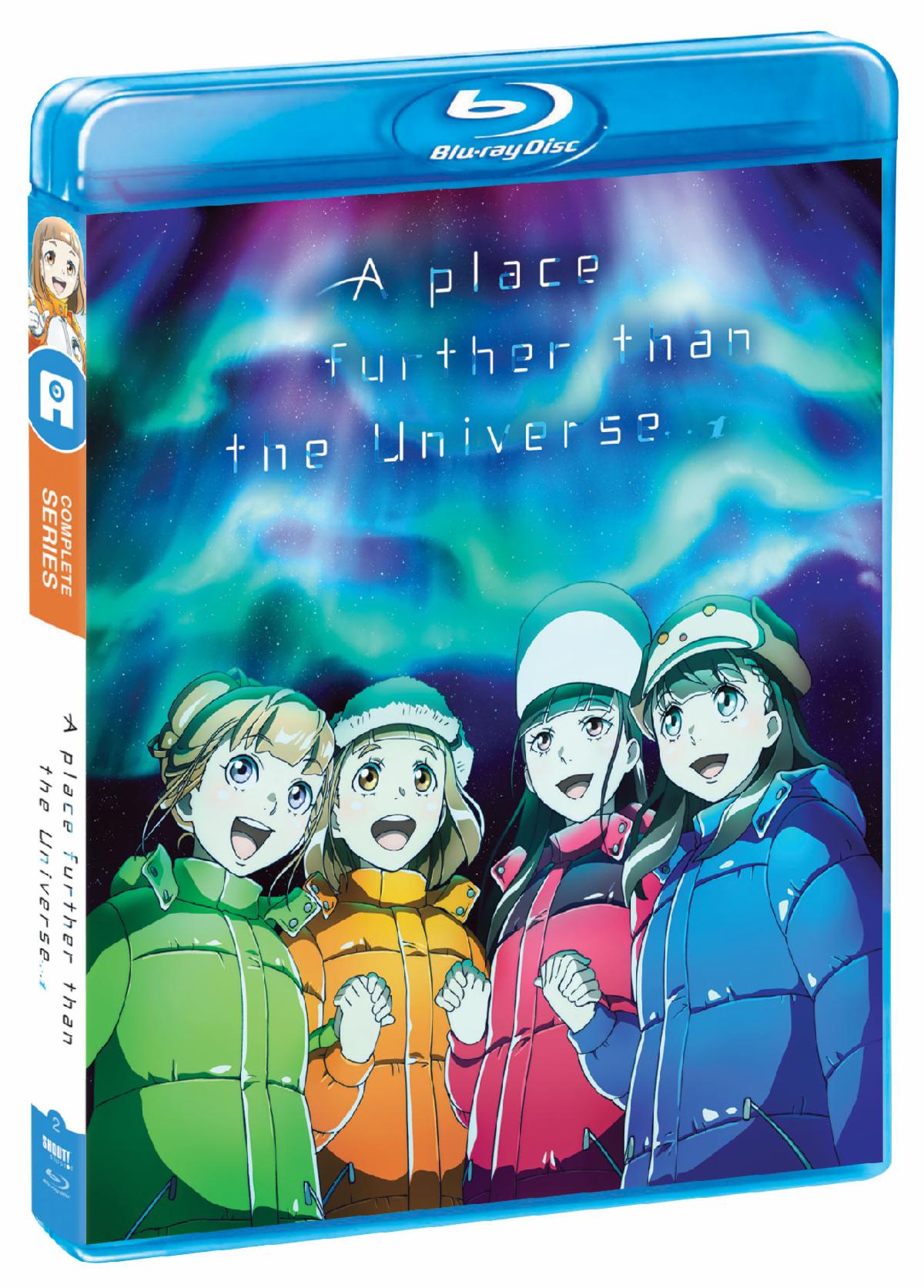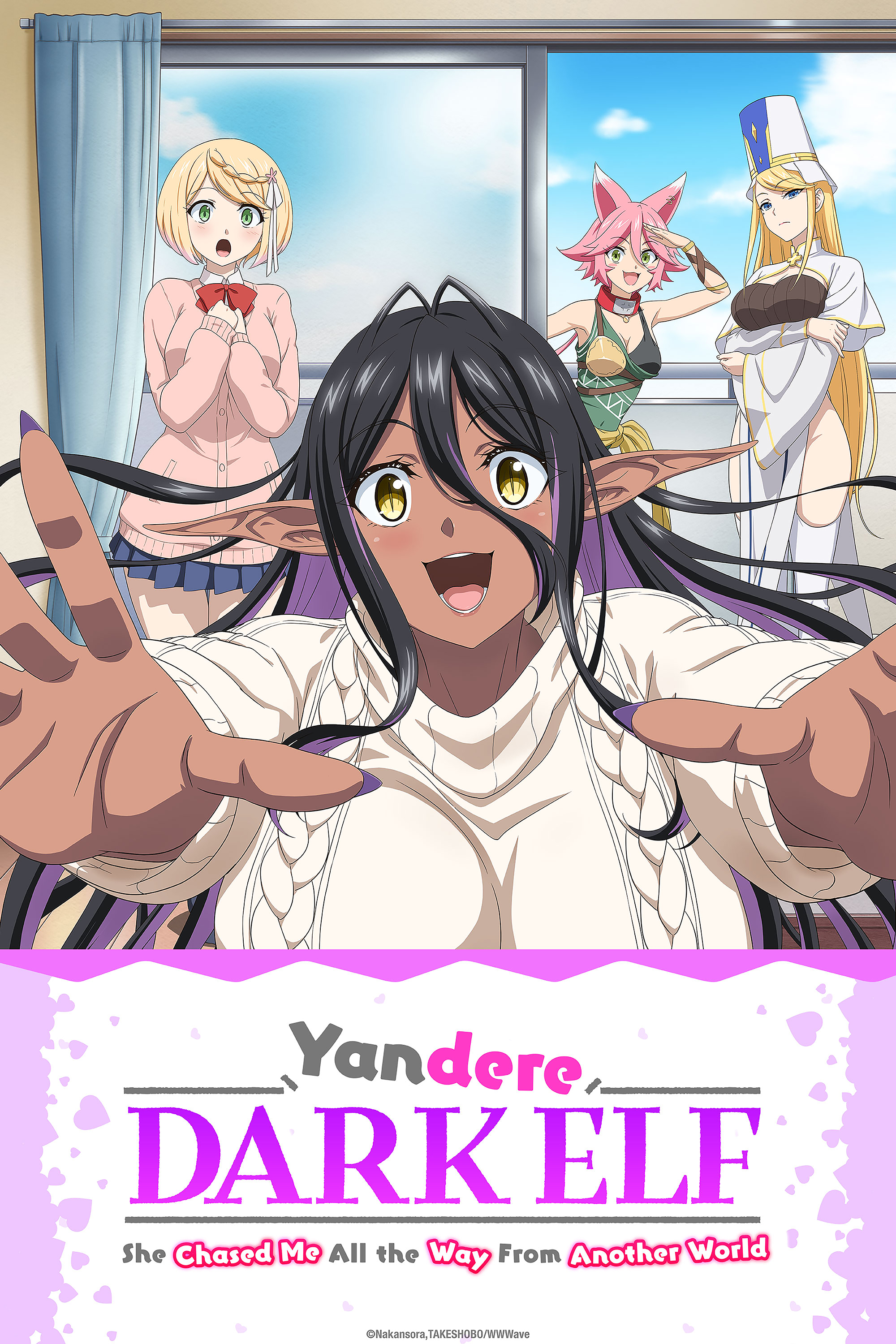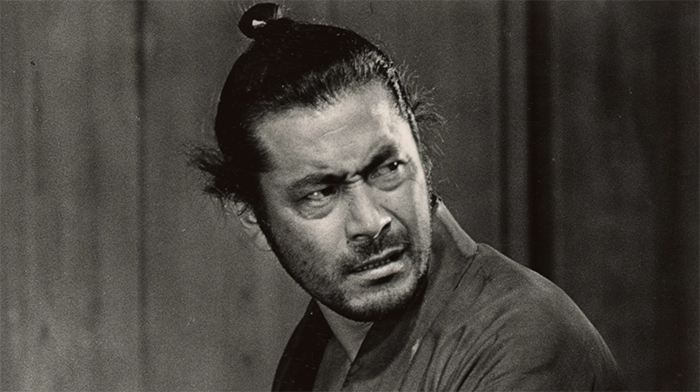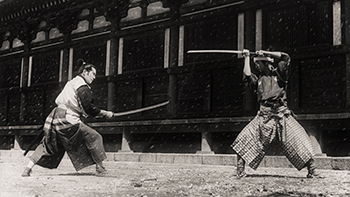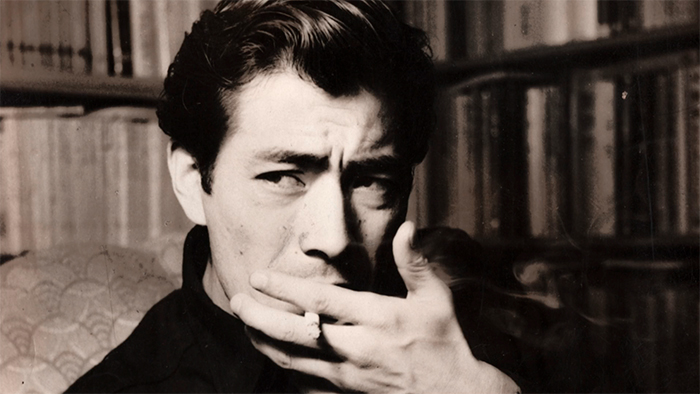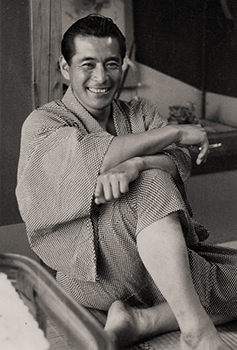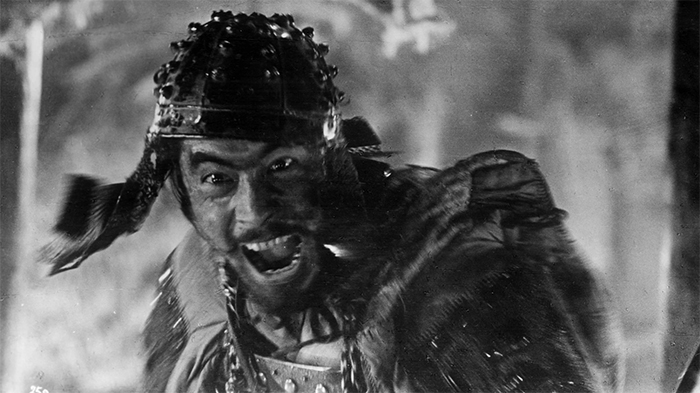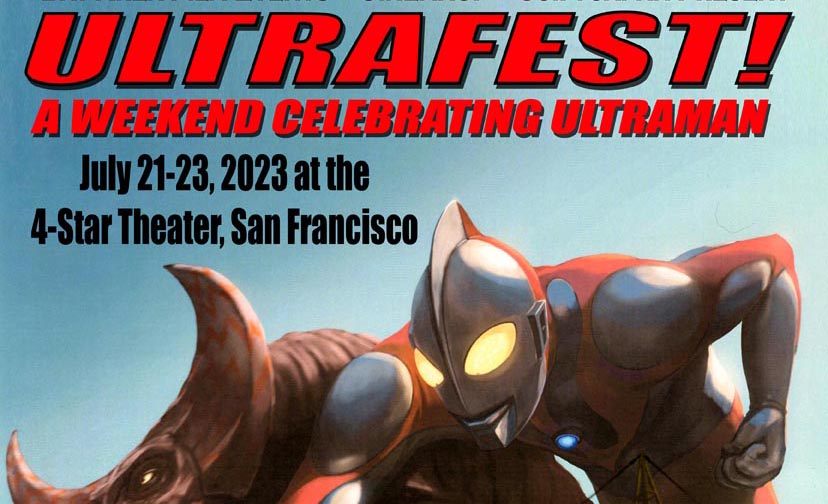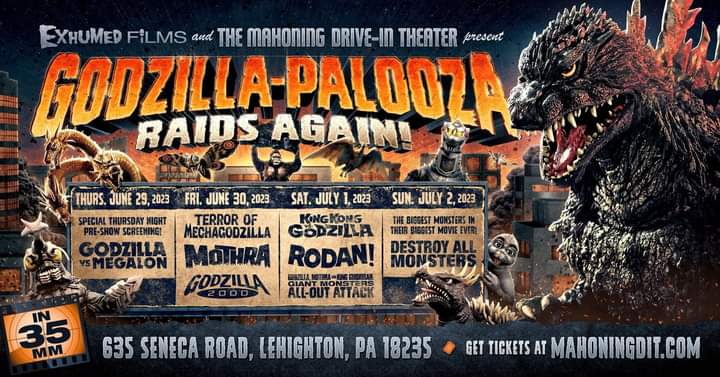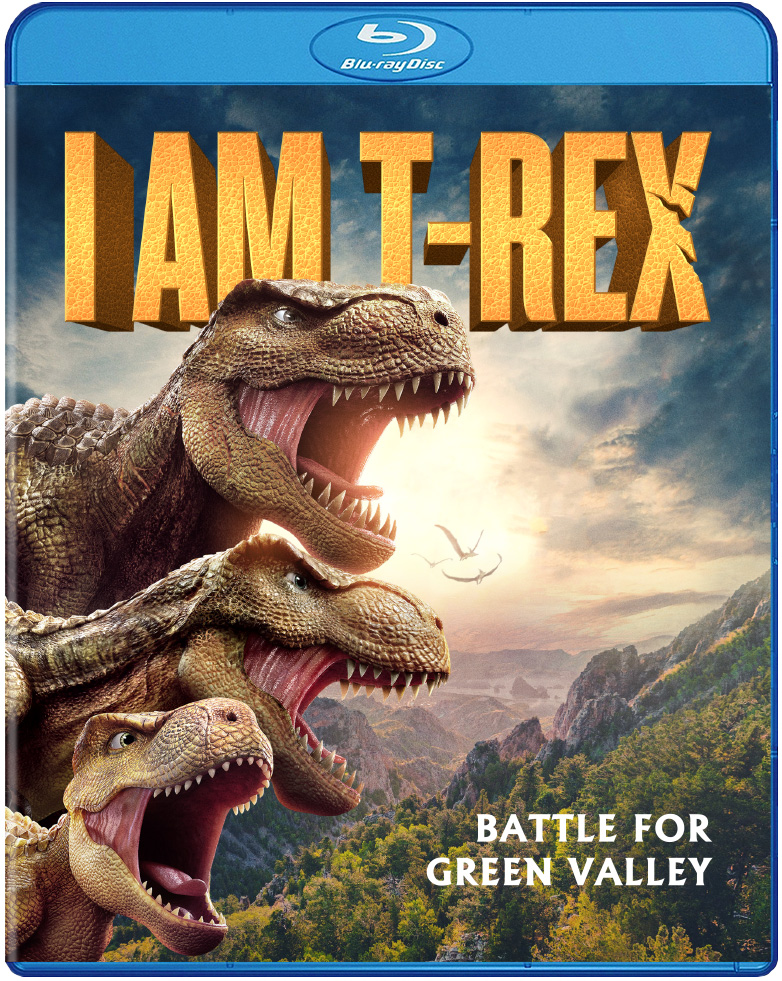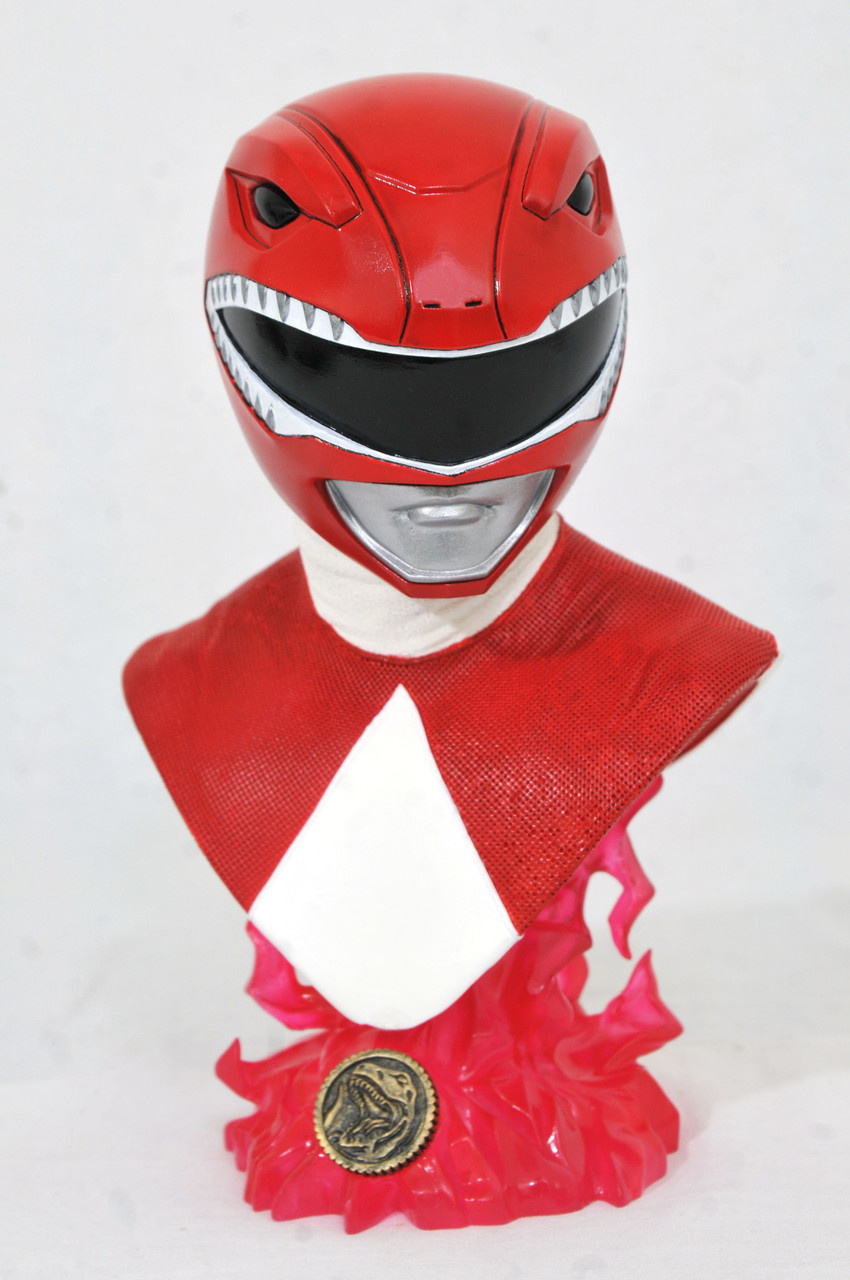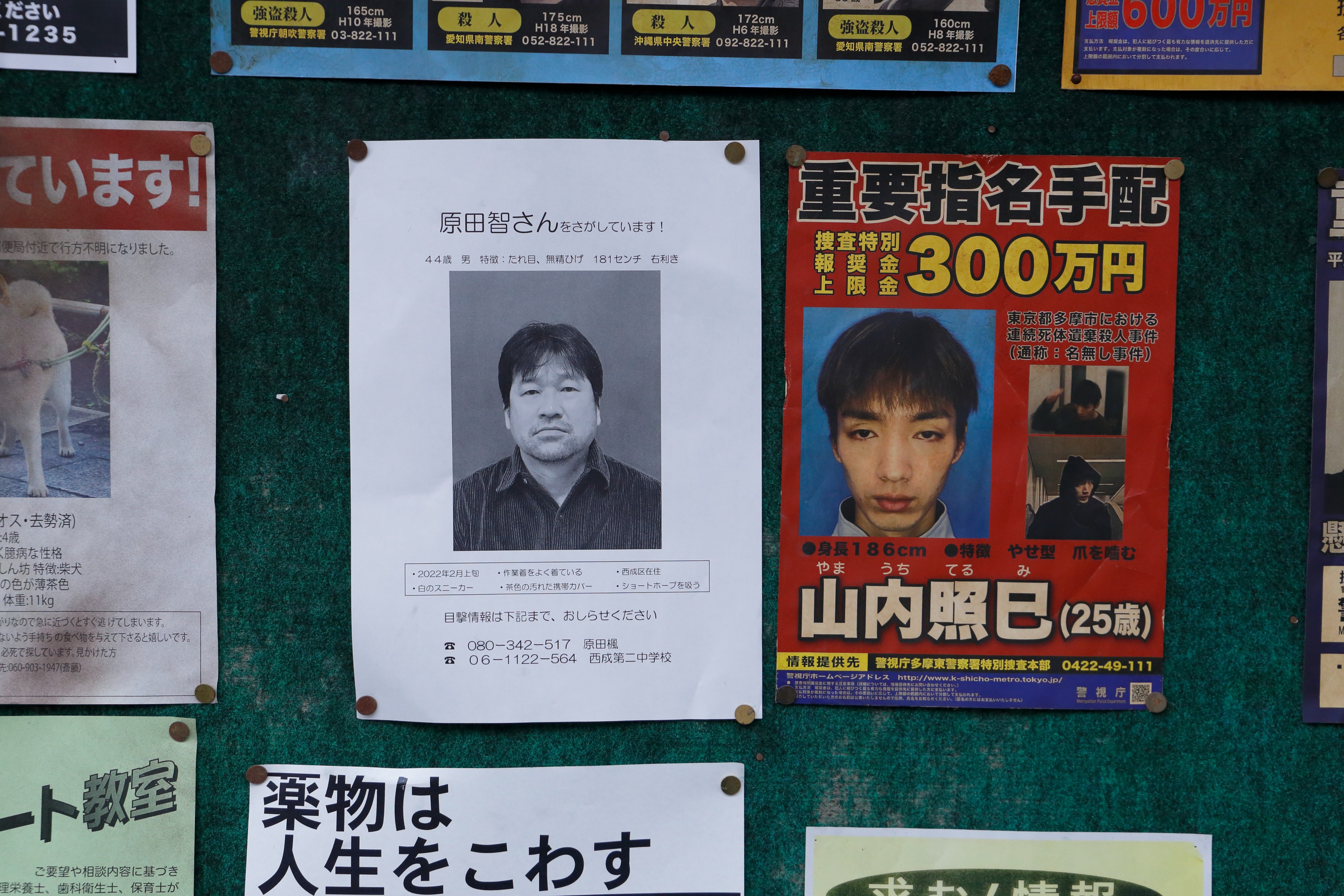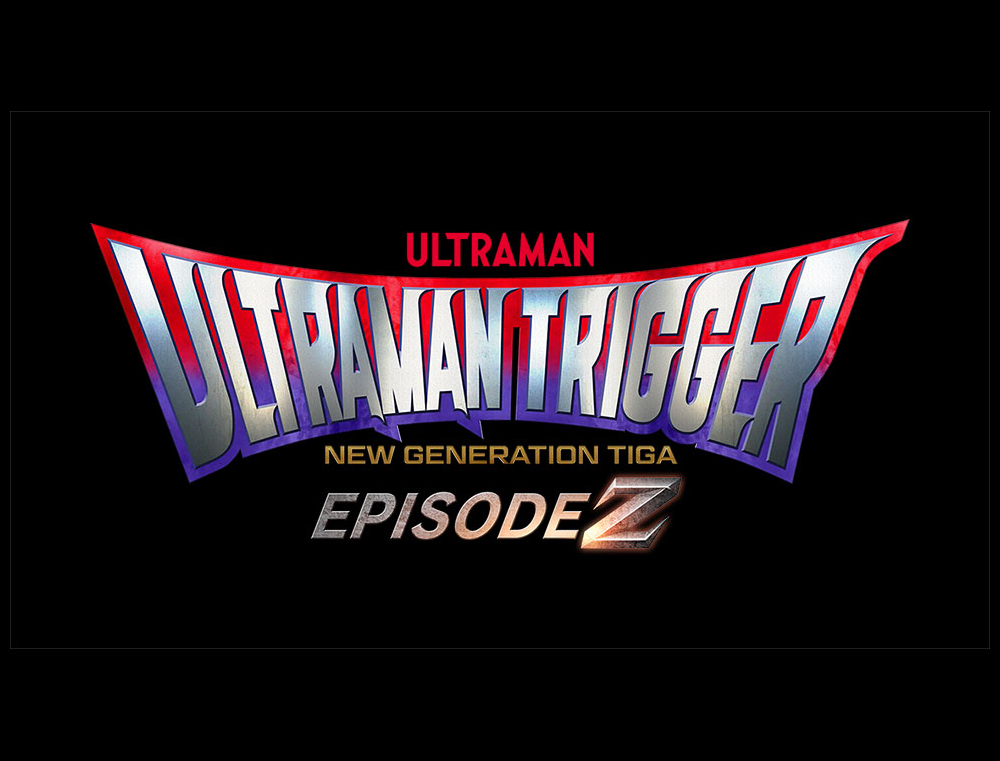Source: Strand Releasing, Celluloid Dreams Official Site: strandreleasing.com/films/mifune Special Thanks to Emma Griffiths
 Theatrical poster. Photo courtesy of Strand Releasing. © 2016 MIFUNE: THE LAST SAMURAI Film Partners
Theatrical poster. Photo courtesy of Strand Releasing. © 2016 MIFUNE: THE LAST SAMURAI Film PartnersMIFUNE: THE LAST SAMURAI, a new film by Academy Award-winning filmmaker Steven Okazaki, explores the accidental movie career of Toshiro Mifune, one of the true giants of world cinema. Mifune made 16 remarkable films with director Akira Kurosawa during the Golden Age of Japanese Cinema, including RASHOMON, SEVEN SAMURAI and YOJIMBO. Together they thrilled audiences and influenced filmmaking around the world, providing direct inspiration for not only THE MAGNIFICENT SEVEN and Sergio Leone and Clint Eastwood’s breakthrough, A FISTFUL OF DOLLARS, but also George Lucas’ STAR WARS. A FILM BY STEVEN OKAZAKI Narrated by Keanu Reeves Includes Interviews with: Steven Spielberg, Martin Scorsese, Teruyo Nogami (Kurosawa`s longtime script supervisor), Kyoko Kagawa (RED BEARD), Yoshio Tsuchiya (SEVEN SAMURAI), Takeshi Kato (THRONE OF BLOOD), Yoko Tsukasa (YOJIMBO), and many more. Official Selection: Telluride Film Festival, BFI London Film Festival, AFI Film Festival Country of Origin: USA/Japan Format: DCP/1.77/Color/B&W Sound Format: Dolby 5.1 Running Time: 80 minutes Genre: Drama Rating: Not Rated In English and Japanese with English Subtitles See this film at the following theaters Now Playing: Denver Int’l Film Festival Denver, CO Now Playing: Virginia Film Festival Charlottesville, VA 11/25/16: IFC Center New York, NY 12/02/16: Laemmle-Ahrya Fine Arts Theatre Beverly Hills, CA 12/02/16: Landmark’s Kendall Square Cinema Cambridge, MA 12/16/16: Zeitgeist Multi-Disciplinary Arts Ctr New Orleans, LA
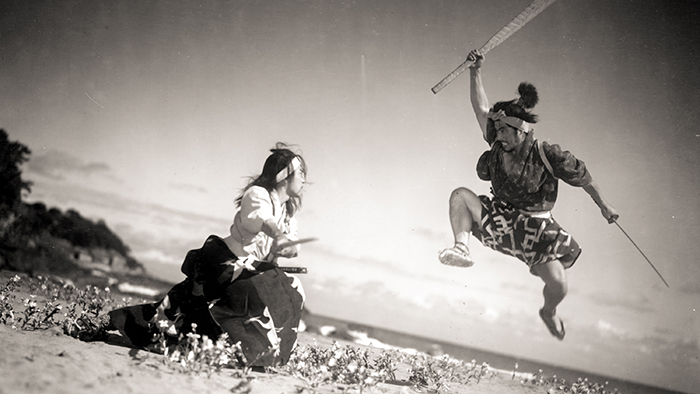 Koji Ttsuruta and Toshiro Mifune in SAMURAI TRILOGY. Photo courtesy of Strand Releasing. © TOHO CO., LTD.
Koji Ttsuruta and Toshiro Mifune in SAMURAI TRILOGY. Photo courtesy of Strand Releasing. © TOHO CO., LTD.SYNOPSIS Mifune was like the ocean – boundless, but sometimes very turbulent.”  - Yoko Tsukasa, Mifune’s co-star in 11 films Toshiro Mifune (1920-97) was, along with Godzilla, the biggest movie star of Japan’s Golden Age of Cinema, appearing in nearly 170 films. His most compelling work was with director Akira Kurosawa. Together they created enduring works of art -- RASHOMON, SEVEN SAMURAI, THRONE OF BLOOD, YOJIMBO, THE BAD SLEEP WELL, RED BEARD -- that shook the cinema world. Their influence on filmmaking is undeniable. Without them, there would be no MAGNIFICENT SEVEN, Clint Eastwood wouldn’t have A FISTFUL OF DOLLARS, and Darth Vader wouldn’t be a samurai.
- Yoko Tsukasa, Mifune’s co-star in 11 films Toshiro Mifune (1920-97) was, along with Godzilla, the biggest movie star of Japan’s Golden Age of Cinema, appearing in nearly 170 films. His most compelling work was with director Akira Kurosawa. Together they created enduring works of art -- RASHOMON, SEVEN SAMURAI, THRONE OF BLOOD, YOJIMBO, THE BAD SLEEP WELL, RED BEARD -- that shook the cinema world. Their influence on filmmaking is undeniable. Without them, there would be no MAGNIFICENT SEVEN, Clint Eastwood wouldn’t have A FISTFUL OF DOLLARS, and Darth Vader wouldn’t be a samurai.
MIFUNE: THE LAST SAMURAI, a new documentary by Academy Award-winning filmmaker Steven Okazaki, explores the evolution of the chanbara film, the period sword fighting film; Mifune`s childhood in Manchuria; his experiences during World War II; his accidental entry into the movies; the development of his iconic samurai character; and his long but sometimes turbulent relationship with Akira Kurosawa. Mifune and Kurosawa, who made 16 films together, were one of cinema’s great director/actor combinations. Just as John Ford and John Wayne elevated the American Western, exploring the human side of America’s violent expansion, Kurosawa and Mifune transformed the chanbara film into bold, provocative narratives that pushed beyond the boundaries of the genre and examined the role of the individual in society. Mifune first gained international attention with his astonishing performance in Kurosawa’s RASHOMON, in which the story of a man’s death and his wife’s rape is told from four different points of view. Nobody, in Japan or elsewhere, had seen anything like the film or Mifune, which won the Golden Lion at the Venice Film Festival and a special Academy Award in 1951, bringing Japanese cinema to worldwide attention. Director Martin Scorsese, featured in the documentary, observes that “Mifune was like a cage animal” and “studied the movements of lions in the wild when he was preparing for the picture.” Mifune -- wry, charismatic and deadly -- re-invented the modern movie hero. “A lot of people try to imitate Mifune,” says Steven Spielberg, “especially when they’re playing strong and silent, but nobody can. He was unique in all the world.” The film was a dream project for Steven Okazaki, known for his Academy Award-winning Days of Waiting and his HBO documentaries WHITE LIGHT/BLACK RAIN and HEROIN: CAPE COD, USA. Steven grew up in Venice, California watching Mifune’s movies. “The Asian and Mexican American kids in the neighborhood were into playing cowboys and gangsters, but after we saw SEVEN SAMURAI and the SAMURAI TRILOGY we all wanted to be samurai,” he recalls. The film is narrated by Keanu Reeves and produced by Toshiaki Nakazawa (Academy Award-winning Best Foreign Film DEPARTURES) and Toichiro Shiraishi. Steven Spielberg, Martin Scorsese, Teruyo Nogami (Kurosawa`s longtime script supervisor), Kyoko Kagawa (RED BEARD), Yoshio Tsuchiya (SEVEN SAMURAI), Takeshi Kato (THRONE OF BLOOD), Yoko Tsukasa (YOJIMBO), and others testify to Mifune’s on-screen brilliance and off-screen humility.
 Akira Kurosawa and Toshiro Mifune on the set of RED BEARD. Photo courtesy of Strand Releasing. © TOHO CO., LTD.
Akira Kurosawa and Toshiro Mifune on the set of RED BEARD. Photo courtesy of Strand Releasing. © TOHO CO., LTD.ABOUT THE DIRECTOR Steven Okazaki’s films explore a range of subjects – from heroin addiction to hula to Hiroshima -- and a mastery of a range of filmmaking styles -- from streetwise vérité to historical narratives, personal films, music documentaries, and “whatever happens” projects like his short films on the Minnesota State Fair and the Tokyo art scene.
He has received numerous honors, including four Academy Awards nominations; an Oscar and a Peabody for the 1991 PBS documentary short DAYS OF WAITING; a Primetime Emmy for the 2007 HBO documentary WHITE LIGHT/BLACK RAIN; and Camerimage’s Outstanding Achievement Award. Steven grew up in Venice, California, went to film school at San Francisco State University, studied painting and played in punk bands before getting serious about filmmaking. He directed children’s films and low-budget features, but focused primarily on documentaries, making SURVIVORS for WGBH Boston, the Oscar-nominated UNFINISHED BUSINESS and TROUBLED PARADISE, all for PBS. Frustrated with the creative and content limitations of working with PBS, he considered quitting filmmaking until he met a group of young heroin addicts. Armed with a digital camcorder, he spent three years on the streets in San Francisco making BLACK TAR HEROIN, a gritty, groundbreaking documentary for HBO. “The digital cameras changed everything,” he says. “Finally, you could go anywhere and shoot anything.” For the past twenty years, he has worked primarily with HBO Documentary Films, recently producing the highly-praised HEROIN: CAPE COD, USA, which explores New England’s devastating heroin epidemic. Looking for a change of scenery, Steven connected with producers Toshiaki Nakazawa and Toichiro Shiraishi to make MIFUNE: THE LAST SAMURAI, about iconic Japanese actor. Toshiro Mifune, along with Sandy Koufax and the painter Amedeo Modigliani, was one of Steven’s childhood heroes.
Filmography
2016 Director, Writer, Editor: MIFUNE: THE LAST SAMURAI, documentary about Japanese actor Toshiro Mifune. Produced by Sedic International, distributed by Strand Releasing. 2015 Producer, Director, Editor: HEROIN: CAPE COD, USA, documentary about seven young heroin addicts. Produced for HBO. Steaming on HBO GO. 2012 Director, Editor: APPROXIMATELY NELS CLINE, short documentary on experimental guitarist. Produced with Fantasy Studios. Distributed by First Run Features. 2011 Producer, Director: ALL WE COULD CARRY, short documentary on Heart Mountain Internment Camp. Produced for Heart Mountain Wyoming Foundation. 2008 Producer, Director, Editor: THE CONSCIENCE OF NHEM EN, short documentary about Cambodia’s Toul Sleng Prison. Produced for HBO. Academy Award Nomination 2007 Producer, Director, Editor: WHITE LIGHT/BLACK RAIN, documentary on Hiroshima and Nagasaki. Produced for HBO. Sundance Film Festival. Primetime Emmy, “Exceptional Merit in Documentary Filmmaking.” Streaming on HBO GO. 2005 Producer, Director, Camera, Editor: THE MUSHROOM CLUB, short documentary on the people and city of Hiroshima. Produced for HBO. Academy Award Nomination 2004 Producer, Director: REHAB, documentary about young adults in a drug rehab program. Produced for HBO. Nancy Dickerson Whitehead Award for Excellence in Journalism. 2002 Producer (with Peggy Orenstein), Director, Camera, Editor: THE FAIR, short on the Minnesota State Fair. Produced for PBS’ “Life 360.” 1999 Producer, Director, Camera, Editor: BLACK TAR HEROIN: THE DARK END OF THE STREET, documentary about five young heroin addicts. Produced for HBO 1996 Producer, Director, Editor: LIFE WAS GOOD, documentary about a family living near to the Nevada Test Site. Produced for NHK Hi-Vision. 1995 Producer, Director: ALONE TOGETHER, documentary about young adults living with HIV. Produced for NHK Hi-Vision. 1994 Producer, Writer, Director: AMERICAN SONS, four performances about how racism shapes the lives of Asian American men. Broadcast on PBS. 1993 Writer, Director: THE LISA THEORY, low-budget comedy about the dangers of dating girls named Lisa. San Francisco International Film Festival, Rotterdam International Film Festival. 1992 Producer, Director: TROUBLED PARADISE, documentary about Hawaiian culture and politics on the Big Island of Hawaii. Funded by the CPB and broadcast on PBS. 1990 Producer, Writer, Director: DAYS OF WAITING, documentary on internment camp artist, Estelle Ishigo. Academy Award winner, George Foster Peabody Award. Funded by the CPB and broadcast on PBS. 1988 Director, Editor: HUNTING TIGERS, documentary on pop culture in Tokyo with Nobel Prize-winning novelist Kenzaburo Oe. Funded by NEA and broadcast on PBS. 1987 Director, Co-Writer: LIVING ON TOKYO TIME, low-budget comedy about a Japanese dishwasher’s life in America. Premiered at Sundance Film Festival, distributed by Skouras Pictures and broadcast on Bravo. 1985 Producer, Director: UNFINISHED BUSINESS, feature documentary about three men who resisted the Japanese American internment. Academy Award nomination. Funded by the CPB and broadcast on PBS. 1982 Co-Producer, Director, CAMERA: SURVIVORS, feature documentary about Hiroshima and Nagasaki atomic bomb survivors living in California. National PBS broadcast on WGBH “World.”
Other Honors
2012 Outstanding Achievement Award, Plus CameraImage, Poland 2008 Honorary Citizen Award, City of Hiroshima Banff World TV Festival: Grand Prize, the History Prize, NHK Japan Prize. 2007 Juror, Sundance Film Festival 2000 Visiting Scholar, Smithsonian Institution, Asian Pacific American Program 1996 International Electronic Cinema Festival – Grand Prize National Educational Media Festival – Gold Award National Council on Family Relations – First Place Honorary UNESCO Award 1994 San Francisco International Film Festival – Special Jury Prize National Educational Media Festival – Silver Apple Award 1991 Clermont-Ferrand Short Film Festival – Grand Prix Secretariat d’Etat, France – Youth & Sports Cinema Prize 1990 San Francisco International Film Festival – Special Jury Prize 1989 Hawaii International Film Festival – People’s Choice Best Documentary Chicago International Film Festival – Silver Hugo 1987 San Francisco International Film Festival – Special Jury Prize 1986 American Film Institute Independent Filmmaker Fellowship 1985 San Francisco Foundation – James D. Phelan Art Award Association of Asian Pacific American Artists – Media Award 1983 Media Alliance – Meritorious Achievement Award 1982 National Endowment for the Arts, Western States Media Arts Fellowship 1978 Instructor Magazine – Best Educational Film Award
Education
1970 Venice High School 1976 California State University, San Francisco, Bachelor of Arts in Film Born: March 12, 1952, Los Angeles, California
DIRECTOR STEVEN OKAZAKI on making MIFUNE: THE LAST SAMURAI I saw my first Toshiro Mifune movie when I was 11 years old. It was a 16mm print of SEVEN SAMURAI projected onto a king size bed sheet at the Japanese Community Center in Venice, California. Every time someone opened the door the screen would flutter and we’d yell, “Close the door!” I remember being mesmerized by the last battle scene in the rain -- the bandits roaring into the village, the horses struggling in the mud, and Mifune slashing the air with his sword and falling to the ground.
All the kids in the neighborhood had seen MAGNIFICENT SEVEN with Yul Brynner and Steve McQueen, thought it was cool and wanted to be cowboys, but after SEVEN SAMURAI we wanted to be samurai. My mother loved Japanese movies so we went regularly to the Toho La Brea on Wilshire and La Brea in Los Angeles. I loved that theater. It was a different world -- they served green tea, Botan rice candy, and you could get senbei (rice crackers) and mix it into your popcorn like they do in Hawai’i. My favorite Mifune film was Hiroshi Inagaki’s SAMURAI TRILOGY. He’s so cool, he scares the hoodlums away with his chopsticks. A Mexican American friend and big Mifune fan reminded me that, “Mifune was the first action star who wasn’t white, before Bruce Lee and Shaft.” As a kid, I wasn’t conscious of that, but I was very aware of my discomfort when I saw Asians in American movies or TV shows, usually playing servants or rat-like villains. Even more demeaning was when non-Asian actors played Asians, like Jerry Lewis in GEISHA BOY or Mickey Rooney in BREAKFAST AT TIFFANY`S. My parents took me to both those films, not knowing what we were in for. It was so horrible we didn’t talk about it or even look at each other when it was over. Mifune was the antithesis of that -- always dignified, never kissed ass, didn’t take shit from anyone. Mifune re-invented the modern movie hero, the wry but deadly loner willing to take on the world. His influence is obvious when you watch Clint Eastwood in A FISTFUL OF DOLLARS, but you can also see it in Paul Newman in HUD and HOMBRE; in the Bruce Willis action films from DIE HARD to the samurai sword in PULP FICTION.
MIFUNE: THE LAST SAMURAI came about when Yukie Kito, a producer in Tokyo, introduced me to another producer named Toichiro Shiraishi in the summer of 2013. He asked me what I was interested in doing and told him I wanted to make a film about the history of the samurai movie, from the earliest silent films to the present. He said that would be “muzukashi,” which translates as “difficult,” but really means “that’s totally impossible,” because it would involve working with several different Japanese studios and they never work together. Then he mentioned that one of the top producers in Japan, Toshiaki Nakazawa, who produced DEPARTURES and 13 ASSASSINS, one of the best recent samurai films (clearly influenced by SEVEN SAMURAI, watch it on Netflix), had announced his intention to make a film about Toshiro Mifune. I was stunned, I love the Mifune films, they’re part of me as a Japanese American. I asked him to contact Nakazawa as soon as he could, tell him I should make the film, and he should stop considering anyone else. I’m not usually so brash, but I didn’t want an once-in-a-lifetime chance to pass me by. Even more so after I googled “Mifune documentary” and “Kurosawa documentary” and found that nothing substantial had been done on either one of them.
A few weeks later, back home in Berkeley, California, Sheila Nevins and Sara Bernstein at HBO Documentary Films called to ask me to make a film about the heroin epidemic that was devastating New England. I said “yes” because I love working with them and I didn’t know if the Mifune film would really happen. A few weeks after that, Kito emailed me that Shiraishi and Nakazawa were very interested, so I flew to Tokyo and had lunch with them and Toshiro Mifune’s grandson, Rikiya. Nakazawa worked with Mifune on his less famous, post-Kurosawa films, such as ZATOICHI MEETS YOJIMBO in 1970, and felt a strong debt to him and the Mifune family. He was close to retiring from producing and wanted to make a film about Mifune before he did. WHITE LIGHT/BLACK RAIN, my documentary about Hiroshima and Nagasaki, had gotten a lot of good attention when it was shown in theaters and on television in Japan. Nakazawa had seen my work and trusted me with Mifune. So I was hired. It took a very long time for the producers in Tokyo work out the rights to use clips from the old Kurosawa/Mifune films, so I moved forward on the HBO doc, shooting in Cape Cod, Massachusetts. During the down time on that I’d run over to Tokyo for a week, shoot some interviews, and rush back to Cape Cod. Somehow it worked out. The best thing about working on the film was meeting Mifune’s colleagues, the actors and production staff who were with him on film after film. Not many of them are left and the ones who are still around are pretty old, but their memories were sharp and their spirits were strong. When they spoke of Mifune, they smiled and you saw that twinkle in their eyes. They loved talking about him, his kindness, humility, and his wild side when he was drinking. The first interview in the film is with Kanzo Uni, who was Mifune’s sword fighting choreographer in in the 1970s. He’s in his eighties, but so genki, so full of life. He talked about Mifune’s aggressive sword fighting style, describing it by grunting and slashing the air, almost hitting the camera lens. Kyoko Kagawa, who came up with Mifune after World War II, is one of the great stars of Japanese cinema, a national treasure. She worked with Japan’s greatest directors -- Kurosawa, Ozu, Mizoguchi and Naruse. Yoshio Tsuchiya, Mifune’s sidekick on screen and in life, was dignified and funny. You felt their love and affection for Mifune, and that special time in all of their lives.
INTERVIEWEES Kyoko Kagawa (b: 1931) was, along with Toshiro Mifune, one of Toho Studios’ “New Faces” in the 1950s and became one of Japan’s most beloved actors. She had prominent roles in some of the most important films of Japan’s Golden Age, including Mikio Naruse’s MOTHER (1952); Yasujiro Ozu’s TOKYO STORY (1953); Kenji Mizoguchi’s SANSHO THE BAILIFF (1954), THE CRUCIFIED LOVERS (1954) and OSAKA STORY (1957). She was a favored actor of Akira Kurosawa who paired her with Mifune in THE LOWER DEPTHS (1957), THE BAD SLEEP WELL (1960), HIGH AND LOW (1963) and RED BEARD (1965). Twenty-eight years later, she starred in Kurosawa’s last film MADADAYO (1993) without Mifune. “Kyoko Kagawa was one of the first people I met when I started the film,” says Steven Okazaki. “She’s a national treasure. I’m in awe of her -- her talent, grace and humility. And she was in TOKYO STORY and SANSHO THE BAILIFF, two of the greatest films ever made!”
Yoko Tsukasa (b: 1934) co-starred with Mifune 11 times, including Hiroshi Inagaki’s SAMURAI SAGA (1959) and Kurosawa’s YOJIMBO (1961). In search of more challenging female roles outside of Toho Pictures, she went to Shochiku Studios to make two memorable films with Yasujiro Ozu, LATE AUTUMN (1960) and THE END OF SUMMER (1961). She lived in the same posh neighborhood as Mifune and, more than once, saw him drive by, yelling “Kurosawa, you idiot!” Yoshio Tsuchiya (b: 1927) was Mifune’s co-star, friend and drinking buddy from his screen debut in SEVEN SAMURAI (1954) through six more Kurosawa films, ending with RED BEARD (1965). Like many of Toho Studios’ contract actors he went back and forth from classic chanbara films to monster movies, which were the rage in Japan after the mega-success of GODZILLA (1954). Eccentric and self-effacing, Tsuchiya relished the sci-fi roles, preferably playing the villain or an alien. He appeared in GODZILLA RAIDS AGAIN (1955), THE MYSTERIANS (1957), SON OF GODZILLA (1967), and DESTROY ALL MONSTERS (1968). Takeshi Kato (1929-2015), an actor/director with Bunkakuza, a modern theater troupe, was one of Japan’s great character actors. After small parts in five Kurosawa films, including THRONE OF BLOOD (1957), he got bigger roles with Mifune in THE BAD SLEEP WELL (1960) and HIGH AND LOW (1963). He also starred in NONE BUT THE BRAVE (1965) directed by Frank Sinatra and THE RETURN OF GODZILLA (1984).
Teruyo Nogami (b: 1927) was hired as the continuity/script assistant on RASHOMON in 1950 and worked on all of Akira Kurosawa’s films over the next 50 years. She wrote an autobiography about her experience with Kurosawa, WAITING ON THE WEATHER (2007) and the screenplay for Yoji Yamada’s KABEIi: OUR MOTHER (2008). “Teruyo Nogami’s participation on this film was critical,” says director Steven Okazaki. “She’s the keeper of the flame. She was there from the beginning, experienced film history in the making. The project would have been pointless without her. When I met her, I was intimidated. I figured, ‘Kurosawa was tough, she must be tough, too. She is tough, but also supportive and funny.” Koji Yakusho, one of Japan’s most brilliant actors, discusses the evolution of the samurai hero and Mifune’s acting. He has played many of the same characters Mifune played, such as Miyamoto Musashi, the hero of the SAMURAI TRILOGY. He is best known for his unforgettable performances in TAMPOPO, SHALL WE DANCE and 13 ASSASSINS. Steven Spielberg is both a director of actors and epics, so it seemed appropriate to interview him for this film. A longtime admirer of the Kurosawa/Mifune films, he asked Mifune to act in his comedy 1941. One of the stars of the film, John Belushi, who grew up on Mifune films in Chicago, played a Yojimbo-inspired character on SATURDAY NIGHT LIVE. Martin Scorsese, who worked with Robert De Niro eight times, discusses the dissolution of the Mifune/Kurosawa 16-film collaboration with particular insight. He says, “If you’re interested in movies, then you’re interested in the work of Akira Kurosawa.” Kurosawa cast Scorsese as Vincent Van Gogh in DREAMS, one of his last films. PRODUCER Producer Toshiaki Nakazawa, got his start in the movie business at Mifune Productions during the later years of Mifune’s career. He also managed Mifune’s Japanese restaurant in Munich, Germany. “I thought I was going to work with him on a movie,” he said, “but instead I ran his restaurant.” Nakazawa is now one of Japan’s most respected producers. His credits include SUKIYAKI WESTERN DJANGO, DEPARTURES (Academy Award for Best Foreign Film, 2008) ICHI, 13 ASSASSUNS, SPACE BATTLESHIP YAMATO, and HARA KIRI: DEATH OF A SAMURAI.
CREDITS Narrated by KEANU REEVES Directed & Edited by STEVEN OKAZAKI Produced by TOSHIAKI NAKAZAWA, TOICHIRO SHIRAISHI Producers KENSUKE ZUSHI, YUKIE KITO, STEVEN OKAZAKI, TARO GOTO Executive Producers NOBUYUKI TOHYA, ISAO KAWAUCHI, TAKESHI HOSHINO Consulting Producer RIKIYA MIFUNE Written by STEVEN OKAZAKI, STUART GALBRAITH IV Directors of Photography TOHRU HINA, YASUYUKI ISHIKAWA Music by JEFFREY WOOD C.A.L. production managers KOJI SUZUKI, YAYOI ICHIKAWA, NORIAKI INOUE, FUEMI TAKAMURA, MASAKI ISHIBE Sound TSUYOSHI ABO Gaffer KATSUHIRO NEDACHI Technical Manager TAKAOMI SAITO Technical Producer KEI-ICHI SHIOHARA Technical Production Coordination DEEP Co., Ltd. Chanbara Stuntmen EIJI KAMADA, KOUSEI ENDOH, MASAYOSHI DEGUCHI, KOICHI FUNAYAMA, YOSHIYUKI MASUJIMA Hair & Make-up Artists AYANO IWANE, AKIKO TSUSHIMA, MITSUMASA SAWADA Props by TAKATSU CO, LTD: KATUSHIRO YAMAGUCHI, GOH TERASAKI Postproduction Coordinator & Assistant Editor GREG KNOWLES Archival Research & Licensing Coordinator BRANDON REIN Researchers ALLISON NAKAMURA, MARK GORNEY
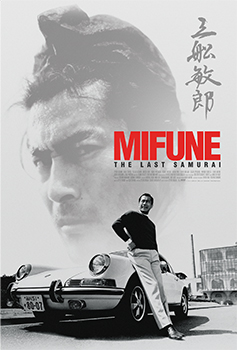 International flyer. Photo courtesy of Celluloid Dreams. © 2016 MIFUNE: THE LAST SAMURAI Film Partners
International flyer. Photo courtesy of Celluloid Dreams. © 2016 MIFUNE: THE LAST SAMURAI Film PartnersLA & NYC UNITS
Directors of Photography GUY MOSSMAN, ERIC LIN Assistant Camera JOSE ELEMENT, MARCOS HERRERA Lighting KEITH JEFFERIES Sound Recordist KYLE PORTER Production Assistant RYAN TILLMAN Transcriber HEATHER J. LARSEN Digital Intermediate COLOR A GO-GO
San Francisco
DI Colorist KENT PRITCHETT DI Conform Artist GEOFFREY ORTHWEIN On-line Editor LOREN SORENSEN DI Post Producer KIM SAYLER Audio Postproduction FANTASY FILM CENTER Sound Editor & Mixer DANIEL OLMSTED Assistant Mix Engineer ALBERTO HERNANDEZ Narration Recording THE VILLAGE Narration Engineer JOEY VITAS Transcription & Translation JVTA Los Angeles Coordinator AYANO FUJITA Transcribers & Translators MAKIKO CARLSON, MIKKA CHEN, TAKAKO CHIDA, RITSUKO GANDY, TAKAYA HIRAI, AYA ISHIHARA, HIROKO ISHIZUKA, JULIANNE LONG, YUKA McLEOD, NORIKO MORISAKI, MARIKO NAKAGAWA, HIROKO NOZOE, AKIKO SAKAMOTO, AYAKA SAKATANI, MAKI SHIMA, NAOMI SOEN, YAYOI SUGISAKI, HIROMI TAKAHASHI, AKIKO TSUCHIYA, MARI UEDA, NAHOKA YOSHIDA
Interview Locations
EDO-TOKYO OPEN-AIR, ARCHITECTURAL MUSEUM Shoko Wakabayashi NATIONAL FILM CENTER SETAGAYA ART MUSEUM Susumu Yano KUROSAWA FILM STUDIO SHINAGAWA HISTORICAL MUSEUM TOHO STUDIOS Invaluable Research & Assistance NATIONAL FILM CENTER, THE NATIONAL MUSEUM OF MODERN ART, TOKYO Akira Tochigi, Hidenori Okada, Masaki Daibo, Mariko Tazawa 8mm Film Courtesy of TADASHI FURUYAMA, J.S.C. Archival Film NHK, NATIONAL ARCHIVES USA Advisors JOHN PIERSON, TOM GORAI, DAVIA NELSON, GAETANO KAZUO MAIDA, PHILIP KAN GOTANDA, SPENCER NAKASAKO, RICK TEJADA-FLORES, DENNIS HAYASHI Digital Masters Courtesy of THE CRITERION COLLECTION Peter Becker, Fumiko Takagi WAKO COMPANY, LTD. Hisaaki Tai, Hiroyuki Takahashi Taiko Written & Performed by SOMEI YOSHINO TAIKO ENSEMBLE, ELLEN REIKO BEPP, BRUCE "MUI" GHENT, HIROYUKI JIMI NAKAGAWA, KALLAN YOICHI NISHIMOTO Additional Music Performed by JUEHAN YE (Erhu), KALLAN YOICHI NISHIMOTO (Percussion), DAWN RICHARDSON (Percussion), BRENDAN DREAPER (Drums), VAN-ANH VO (Dan Tranh) Music recorded at FANTASY STUDIOS Berkeley, California Produced by Jeffrey Wood Engineers ADAM MUNOZ, JESSE NICHOLS, ROBERT KIRBY
Songs
"Infra 4" Composed by MAX RICHTER Performed by Louisa Fuller, Natalia Bonner, Nick Barr, Ian Burdge, Chris Worsey Courtesy of Deutsche Grammophon GmbH, Hamburg Under license from Universal Music Enterprises "Rockabilly Kenpoh" Performed by HIBARI MISORA Music & lyrics by MASAO YONEYAMA Courtesy of Columbia Songs, Inc. "Kiso Bushi" Performed by KING SALON ORCHESTRA Arranged by KOICHI SUGII Courtesy of King Record Co., Ltd. "Sado Okesa" Performed by KING SALON ORCHESTRA Arranged by KOICHI SUGII Courtesy of King Record Co., Ltd.
Motion Picture clips
SEVEN SAMURAI SAMURAI I - Musashi Miyamoto SAMUARI II - Duel at Ichijoji Temple SAMUARI III - Duel at Ganryu Island THRONE OF BLOOD YOJIMBO RED BEARD Used with permission from TOHO CO., LTD. RASHOMON Courtesy of Kadokawa Corporation KOYA NO SURONIN Courtesy of Mifune Productions, Ltd. CHOKON Courtesy of the National Film Center with permission from Nikkatsu Corporation KURAMA TENGU GYAKURYU Courtesy of Matsuda Film Productions OROCHI THE IDLE VASSAL: ENTER THE PILE OF TREASURE CHUSHINGURA GORO MASAMUNE KOSHI-DEN JIRAIYA THE HERO FUUNJO-SHI Courtesy of the National Film Center Still photographs courtesy of MIFUNE PRODUCTIONS, KUROSAWA PRODUCTION, OYA SOICHI LIBRARY, PHOTO IGARASHI, MARUBELL COMPANY Additional stills from THE MOST BEAUTIFUL (1944) SNOW TRAIL (1947) DRUNKEN ANGEL (1948) STRAY DOG (1949) MOTHER (1952) YAGYU CONFIDENTIAL (1957) THE LOWER DEPTHS (1957) THE HIDDEN FORTRESS (1958) RICKSHAW MAN (1958) SAMURAI SAGA (1959) THE THREE TREASURES (1959) SALARYMAN CHUSHINGURA (1960) STORM OVER THE PACIFIC (1960) THE BAD SLEEP WELL (1960) DAREDEVIL IN THE CASTLE (1961) SANJURO (1962) HIGH AND LOW (1963) MOTHRA VS. GODZILLA (1964) SAMURAI ASSASSIN (1965) JAPAN`S LONGEST DAY (1967) SAMURAI BANNERS (1969) ZATOICHI MEETS YOJIMBO (1970) © TOHO CO., LTD. SCANDAL (1950) TOKYO STORY (1953) LATE AUTUMN (1960) © SHOCHIKU CO., LTD. THE QUIET DUEL (1949) THE CRUCIFIED LOVERS (1954) SANSHO THE BAILIFF (1954) © KADOKAWA CORPORATION THE SANDS OF KUROBE (1968) © ISHIHARA PRODUCTIONS RED LION (1969) © MIFUNE PRODUCTIONS DEEP RIVER (1965) © SHIGOTO, INC. Inspired by Samurai Hyoden: Mifune Toshiro by MICHIKO MATSUDA published by Bungei Shunju International sales CELLULOID DREAMS Legal affairs TETSUYA TSUJI Subsidized by J-LOP Special thanks PEGGY ORENSTEIN, DAISY OKAZAKI, RIKKI NINOMIYA, MIHOKO IIDA, AMBLIN ENTERTAINMENT, MARVIN LEVY, MARY HULETT, CLAY LERNER, SIKELIA PRODUCTIONS, VICTORIA LUCAI, ALEXIS GIUSFREDI, ERIKO MIYAGAWA, JAMES MOLL, YUKIO IGAMI, FUMIAKI ITAKURA, KIKUMI YAMAGISHI, TOM LUDDY, RICHARD WRIGHT, DONALD T. HATA, NANCY & JIM RUSSELL, ZAENTZ MEDIA CENTER A production of CREATIVE ASSOCIATES, Ltd., FARALLON FILMS With support from MIFUNE PRODUCTIONS CO, Ltd. Shiro Mifune, Akemi Mifune KUROSAWA PRODUCTION CO. Hisao Kurosawa FIELD-R LAW OFFICES FILOSOPHIA, INC Film partners SEDIC INTERNATIONAL, DENTSU, TOKYO MX, CHUO EIGABOEKI Copyright © 2016 MIFUNE: THE LAST SAMURAI Film Partners. All Rights Reserved. First Publication of this motion picture (sound recording and film): United States of America 2016. MIFUNE: THE LAST SAMURAI Film Partners is the owner of the copyright in this motion picture. This motion picture is protected by the copyright laws of the United States of America and other countries. Any unauthorized duplication, copying or use of all or part of this motion picture may result in civil liability and/or criminal prosecution in accordance with applicable laws.
About Strand Releasing
Founded in 1989, Strand Releasing is one of the leading U.S. distributors of foreign language, American independent, and documentary films in the U.S. in theaters, on DVD/Blu-Ray and via Video-On-Demand. Strand Releasing was honored with a ten and twenty year retrospective at the Museum of Modern Art in New York. Other honors have included retrospectives at the Yerba Buena Center for the Arts in San Francisco, the Seattle International Film Festival, the Provincetown Film Festival and the Eastman-Kodak House in Rochester, New York.


